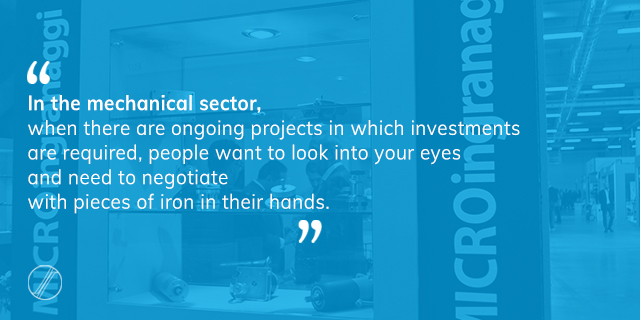The importance of producing and marketing parts that are checked and which are compliant is something we have discussed many times. The question I’d like you to answer today is
Where is the best place to perform quality checks?
My answer is “the company “and now I’ll explain what I mean. Quality control is characterised by many aspects and is influenced by many factors: the type of production, the sector of goods for which the part is intended, the level of precision that is required or in any case requested by the customer, the structure and organisation of the production plant and so on.
Quality checks typically fall into two main categories: on the one hand there are those that are performed in the area of production and, on the other, there are those that are performed in a dedicated area.
In the first case it is however possible to make a distinction into three subcategories. There are the checks on the machine, i.e. manual checks that are only performed when specific processing is finished and then when the part exits the machine. In such cases the entire part is not normally measured, only the dimensions of the parts that have just been processed or in any case where there is a greater risk of error.
Then there is the so-called control in machine, an operation that is only possible for companies that possess the latest generation machinery, allowing checks to be performed even before production of the piece is completed. The main advantage of this type of control is that, being automatic, they are performed without the intervention or the supervision of the operator. A practical example of these systems is our NTX 1000 multitasking machine.
A third sub-category is that of line controls: once the processing at a given station has been performed, before moving on to the next one, the part passes through an intermediate phase at which it is checked. After verifying that what has been performed up to that point is compliant, this part can move to the next station. Otherwise it is discarded. Also in this case the controls are automatic and connected to the production line, able, when necessary, to act accordingly (it is, for example, possible to stop the line itself or to advise the operator who will intervene where appropriate).
In addition to the checks carried out in the area of production, as stated, there are those that are performed in a dedicated area, namely in the measuring room, characterized by a controlled temperature, controlled humidity and equipped with all the necessary tools.
In this place the checks on the goods in acceptance are performed as well as those particular ones that may be required during production. I refer, for example, to checks on the first piece produced to verify that the machine in question has been set correctly. And again: in the measuring room post-production checks are carried out (where the minimum standard requires at least one measurement at the start of production, one half-way through and one at the end). During this final inspection it is possible to control every aspect of the piece (it may, for example, be necessary to check the roughness, the roundness, the involute, the diameter, the hardness, etc.).
It happens, finally, that sometimes for some types of production, it is necessary to move certain tools or machines from the measuring room to the side of the machine (or line) that is processing a piece. This, for example, might be the case where 100% checks are to be carried out and therefore on all the products being made. Considering that often codes are involved whose measurement time exceeds that of production, it goes without saying that it would undoubtedly be more convenient to move the measuring instrument close to the machine. The same happens when parts are requested with very tight tolerances and where therefore a high number of checks is in any case necessary.
So, returning to the original question, I think that






